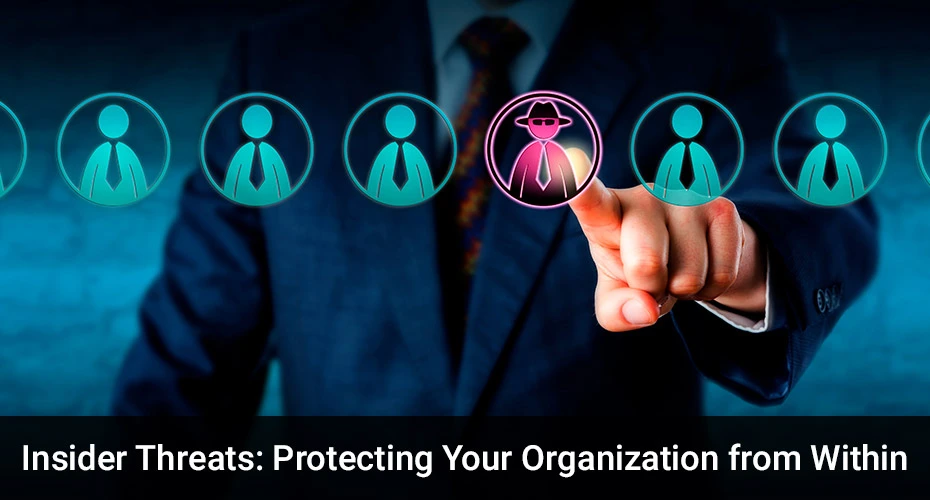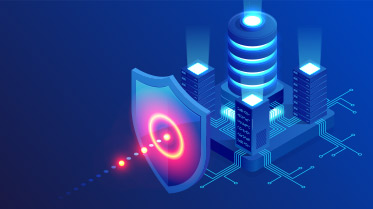In 2023, Tesla experienced its biggest-ever security threat which impacted over 75,000 of its employees. And no, the breach wasn’t the act of a skilled hacker, but an insider threat that resulted in a massive data breach. Two former employees misappropriated personally identifiable information violating Tesla’s IT security and data protection policies. The information included names, addresses, phone numbers, employment-related records, and Social Security numbers belonging to current and former employees.

The bottom line: insider threats are real and can be extremely devastating for any organization – big or small. Read on as we discuss the different types of insider threats and unravel the top tips to protect your organization.
What Is an Insider Threat?
In the world of cybersecurity, where external threats often steal the spotlight, there’s another concern lurking much closer to home – insider threats. Insider threats are often regular employees, contractors, or partners who know the ins and outs of your systems. Their actions, whether intentional or not, can jeopardize sensitive information, intellectual property, and even the reputation of your organization.
What are the Different Types of Insider Threats?
Insider threats, whether done deliberately or indeliberately by employees, partners, or contractors, are on the rise. A simple click on a malicious link, poor password hygiene, or intentional leaking of information can all cost businesses millions of dollars in lost trust, hefty fines, and a poor business reputation. According to IBM’s Cost of a Data Breach Report 2023, data breaches initiated by malicious insiders cost businesses $4.90 million on average, 9.5% higher than the average data breach.
While the average external threat compromises about 200 million records, incidents involving insider threats have resulted in the exposure of 1 billion records or more. These damaging insider threats can be categorized into three main types:
1. Malicious Insiders
Malicious insiders or recruited insiders are usually disgruntled current or former employees, who intentionally misuse their access for revenge and/or financial gain. Their main aim is to disrupt business operations or leak customer information, intellectual property, trade secrets, or other sensitive data. In 2023, a portion of Twitter’s source code was leaked online by a malicious insider, causing a major exposure of intellectual property. Malicious insider threats are significantly more expensive to respond to, costing businesses on average $701,500 per incident.
2. Non-malicious Insiders
Non-malicious insiders or careless insiders are usually those who do not have any malicious intent but create security risks through ignorance or recklessness. Common examples include falling victim to a phishing attack, bypassing security controls, emailing sensitive information to people outside the organization, and more. According to the 2023 Cost of Insider Risks Global Report, non-malicious insiders account for 75% of incidents and cost $505,113 on average.
3. Compromised Insiders
Compromised insiders are employees or partners whose credentials are stolen by bad actors. Using advanced social engineering tactics and malware, cybercriminals gain control over an insider’s account and exploit it for evil intentions. Threats launched by compromised insiders are the most expensive insider threats, costing victims $804,997 to remediate on average.
What Steps Can Organizations Take?
Whether malicious, negligent, or compromised, the cost of insider threats has risen to $16.2 million per organization in 2023, up from $15.4 million in 2022. To contain and remediate these threats or prevent them from happening in the first place, organizations must take strong steps. Here’s what you can do to safeguard your organization from the impact of insider threats:
1. Invest in an Insider Risk Program
Having a robust insider risk program can help protect your organization from insider threats. It can help you list the different types of threats and how you can prevent them and mitigate their consequences. As a coordinated group of capabilities under centralized management, the program can help you detect and prevent the unauthorized disclosure of sensitive information. It can also ensure compliance with necessary standards and limit the costs of insider attacks.
2. Up Your Incident Response Game
No organization is 100% risk-free. To fight against insider threats, you must up your incident response game. A formal incident response program can allow cybersecurity teams to limit or prevent damage from insider threats. This program should clearly specify the roles and responsibilities of different members as well as the security solutions that need to be installed – in case a threat is detected. It should also include a business continuity plan to maintain operations as well as a communication plan to inform company executives, employees, clients, and even law enforcement agencies about the insider threat.
3. Embrace AI Tools
As advancements in AI continue to rise, embracing AI tools is a great way to contain insider threats. IBM reports that organizations experience up to $1.76 million in savings with the use of AI security tools compared to organizations that don’t. AI can help in the rapid investigation and prioritization of alerts based on credibility, relevance, and severity of the risk. This technology can also help organizations quickly identify anomalies in employee transactions or abnormalities in data access and take quick steps to thwart threats in time.
4. Enable Continuous Monitoring
Continuously monitoring daily workflows and processes is yet another way of foiling insider threats. Automation tools can run around the clock and send alerts to security teams if a risk has been detected. Security experts can then enable the necessary risk mitigation to limit consequences and safeguard business and personnel data.
5. Educate and Train Employees and Partners
When it comes to insider threats, your employees and partners are the weakest link. Therefore, educating and training them about the risks (and causes) of insider threats is extremely important. Such awareness can help them understand their responsibilities to protect the organization. It can also encourage them to be more vigilant in their daily lives and report suspicious activities to the security team.
Take the Right Approach to Preventing Insider
Cyberattacks are on the rise and being cyber resilient is the key to withstand them. While bad actors are constantly searching for vulnerabilities to launch sophisticated attacks, insider threats cost organizations dearly. Containment and remediation represent the most expensive activity centers at $179,209 and $125,221 per incident, respectively. With organizations needing a minimum of 86 days to contain an insider threat, it pays to take preventive steps.
If you want to navigate the changing cybersecurity landscape, you must invest in a robust insider risk program. You must also strengthen your incident response game, leverage AI in cybersecurity, enable continuous monitoring, and ensure training and education to restrict the impact of insider threats.
Protect your organization from within today!





